As an Amazon Associate I earn from qualifying purchases. Please see my Privacy Policy for more details.
This homemade Vegan Molasses Oatmeal Bread is deliciously soft and buttery and smells amazing while it bakes. Made with simple pantry and fridge staples, this is a versatile classic loaf of bread you’ll want to use for breakfast, lunch and dinner!
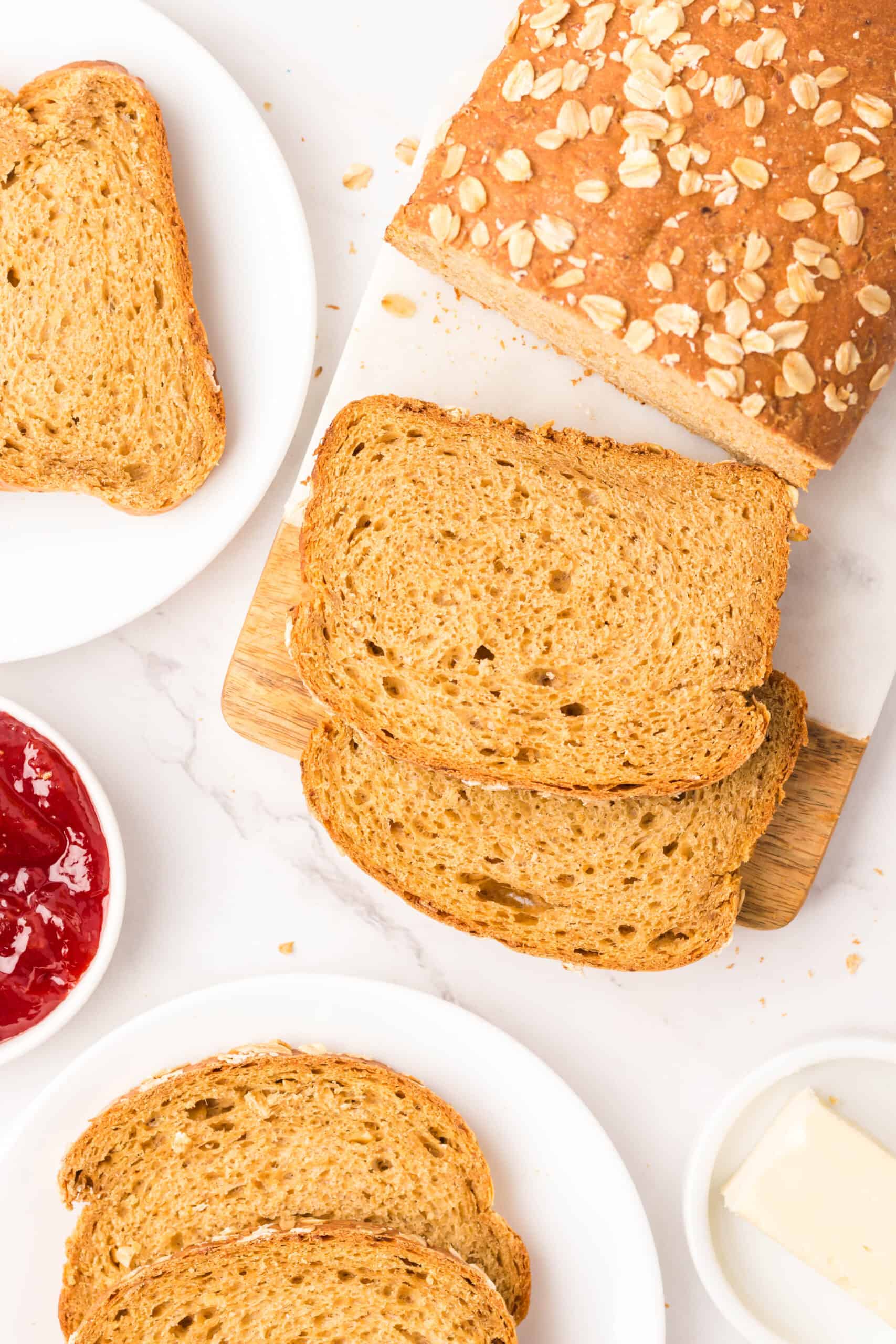
This hearty, yet soft loaf of bread is easy to make, has a tender, fluffy texture, and is so delicious!
You’ll get two loaves out of this recipe – one to enjoy now and one to freeze for later – so you’ll always have a tasty slice of oatmeal bread available for meals and snacks.
Ingredients you need

Ingredient notes and substitutions
Yeast ~ We are using active dry yeast in this recipe, which seems to be the most readily available in grocery stores. It needs to be activated before adding to the reicpe. For this step, use warm water to activate the yeast, not boiling water.
You may have seen recipes that call for sugar in the activating process, but this isn’t necessary. [source]
If you have instant dry yeast, you can use that, instead.
Molasses ~Molasses provides sweetness and depth of flavor.
If you love molasses, don’t miss these: Chocolate Molasses Cookies, Vegan Gingerbread Cake, Oat Milk Gingerbread Smoothie, or Healthy Cookie Butter!
Oats ~ Oats have a mild, nutty flavor. They add moisture to this bread, making the inside soft and fluffy.
Use old-fashioned rolled oats for best texture. I do not recommend instant oats or quick oats in this case as they may cause the dough to be too sticky. Do not use steel cut oats as they won’t soften.
Oats are so versatile! Try them in my Healthy Oatmeal, Cranberry Oat Crumble Bars, Strawberry Overnight Oats, Vegan Carrot Muffins, and Spicy Bean Burgers!
Flour ~ I use all-purpose flour because it’s a pantry staple and I always have it on hand. If you have bread flour, that will work, as well.
Bread flour is marginally higher in protein than all-purpose, resulting in a denser bread with a slightly higher rise, but the difference is minimal and you likely won’t notice.
I have not trialed this easy homemade bread recipe with gluten-free flour, so proceed at your own risk if you choose to do so.
Butter ~ Your favorite vegan butter will work. Use the stick butter, not the spreadable kind in a tub.
How to make the recipe
Please scroll down to the recipe card for exact ingredient measurements and instructions.
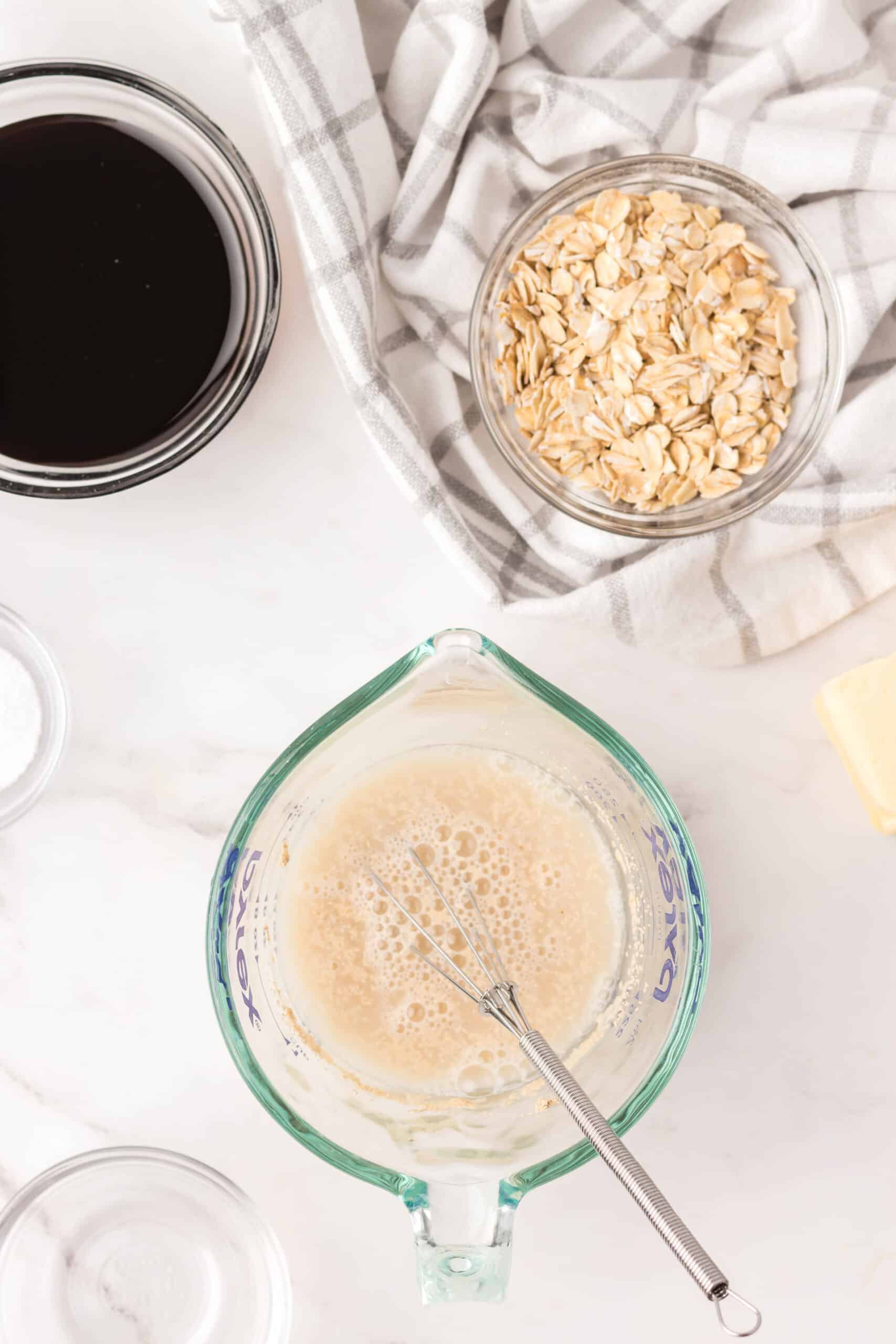

1 Activate the yeast by whisking it with warm water. Set aside.
2 Make the oatmeal by mixing the oats, molasses, and boiling water.
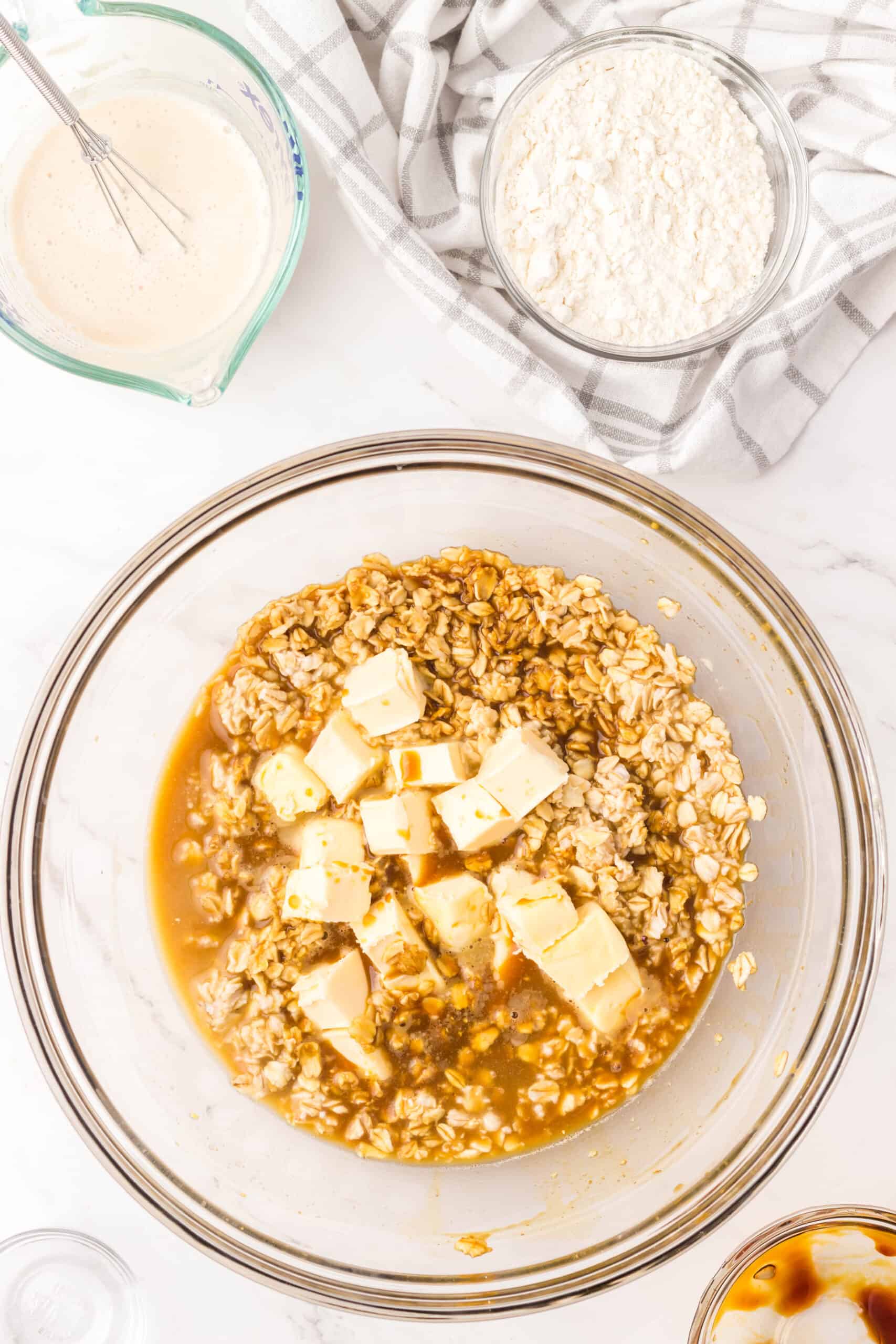


3 Add the cubed butter to the oatmeal mixture.
4 Stir the butter until it melts. Set aside to cool down a bit.
5 Add the activated yeast mixture and the salt to the slightly cooled oatmeal mixture.
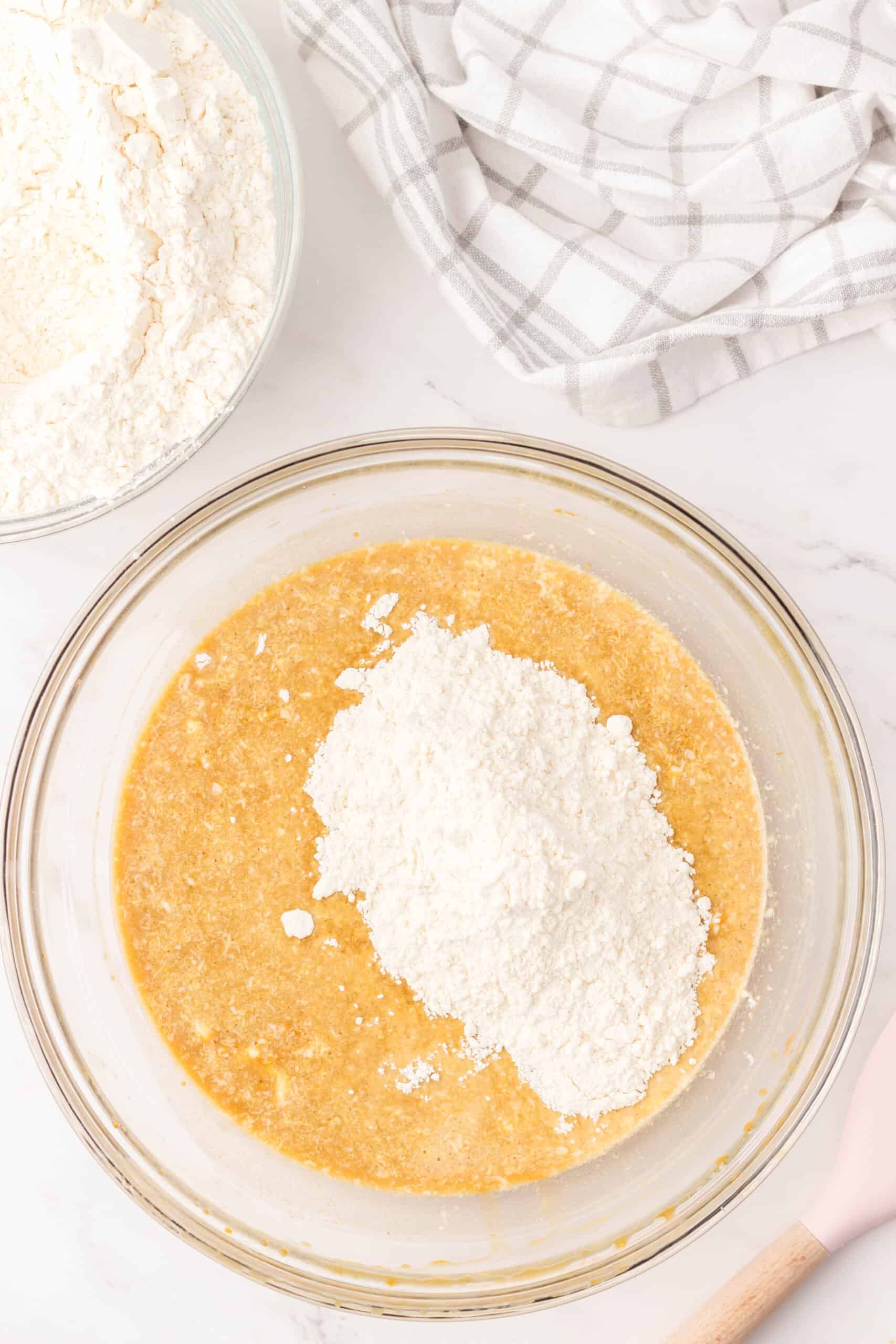

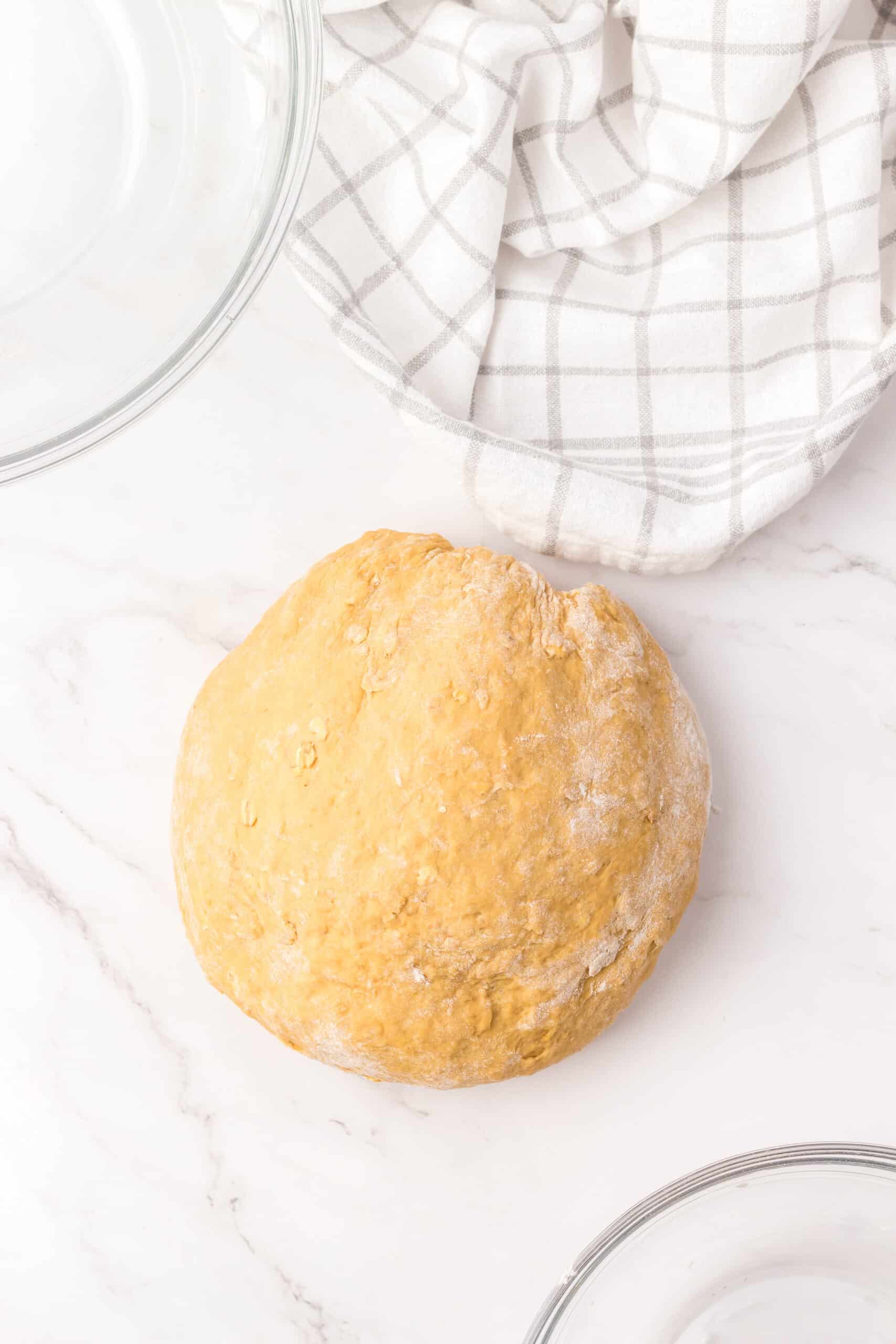
6 Add the flour, ½ cup at a time, mixing after each addition.
7 Continue adding flour until you can no longer easily mix it in, about 4 cups.
8 Transfer the dough ball to a lightly floured work surface. Continue to knead in flour until the dough doesn’t stick to the counter.
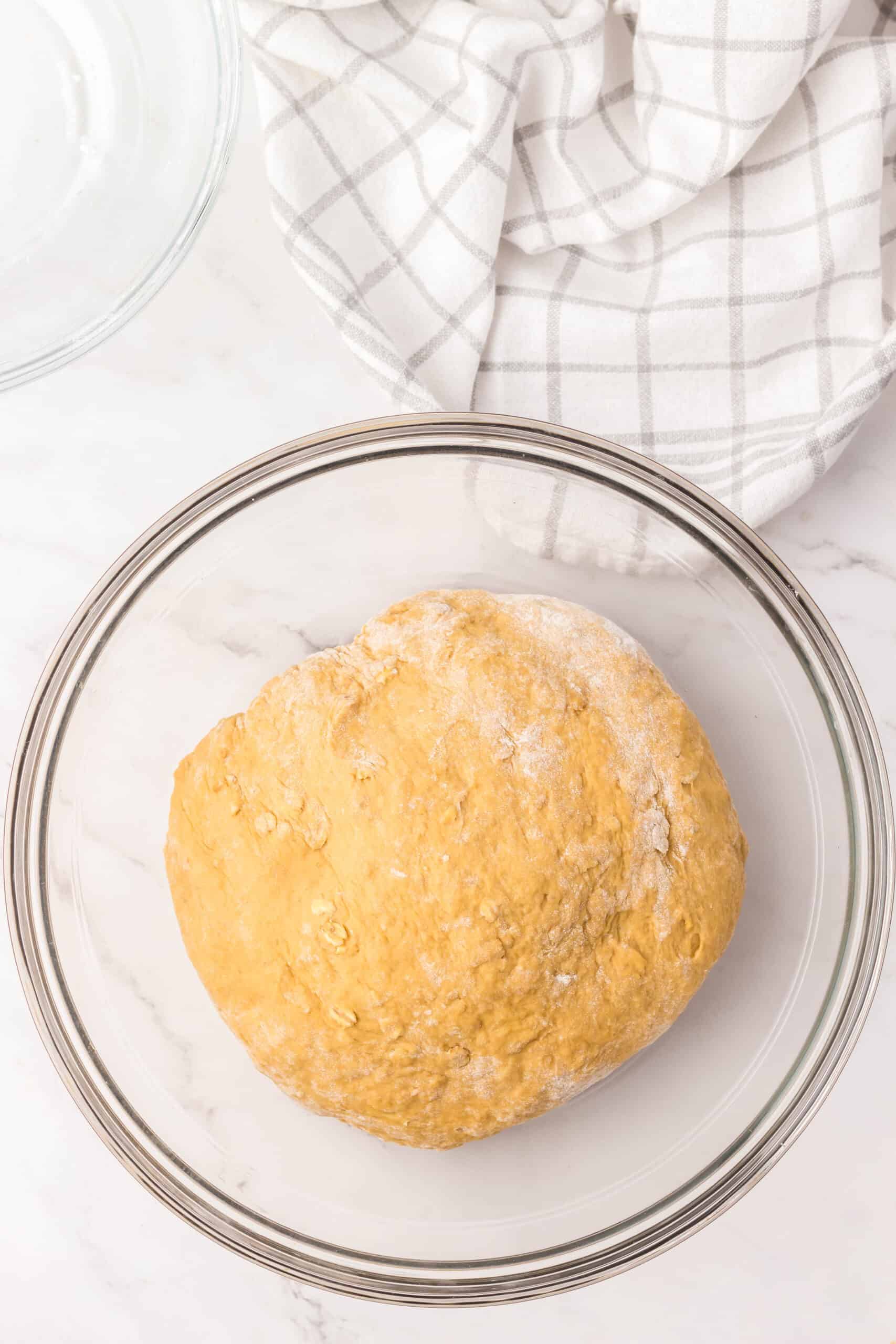

9 Transfer the dough to a large greased bowl. Cover the bowl with a tea towel or plastic wrap.
10 Set aside to rise for 1 ½ to 2 hours, until doubled in size.
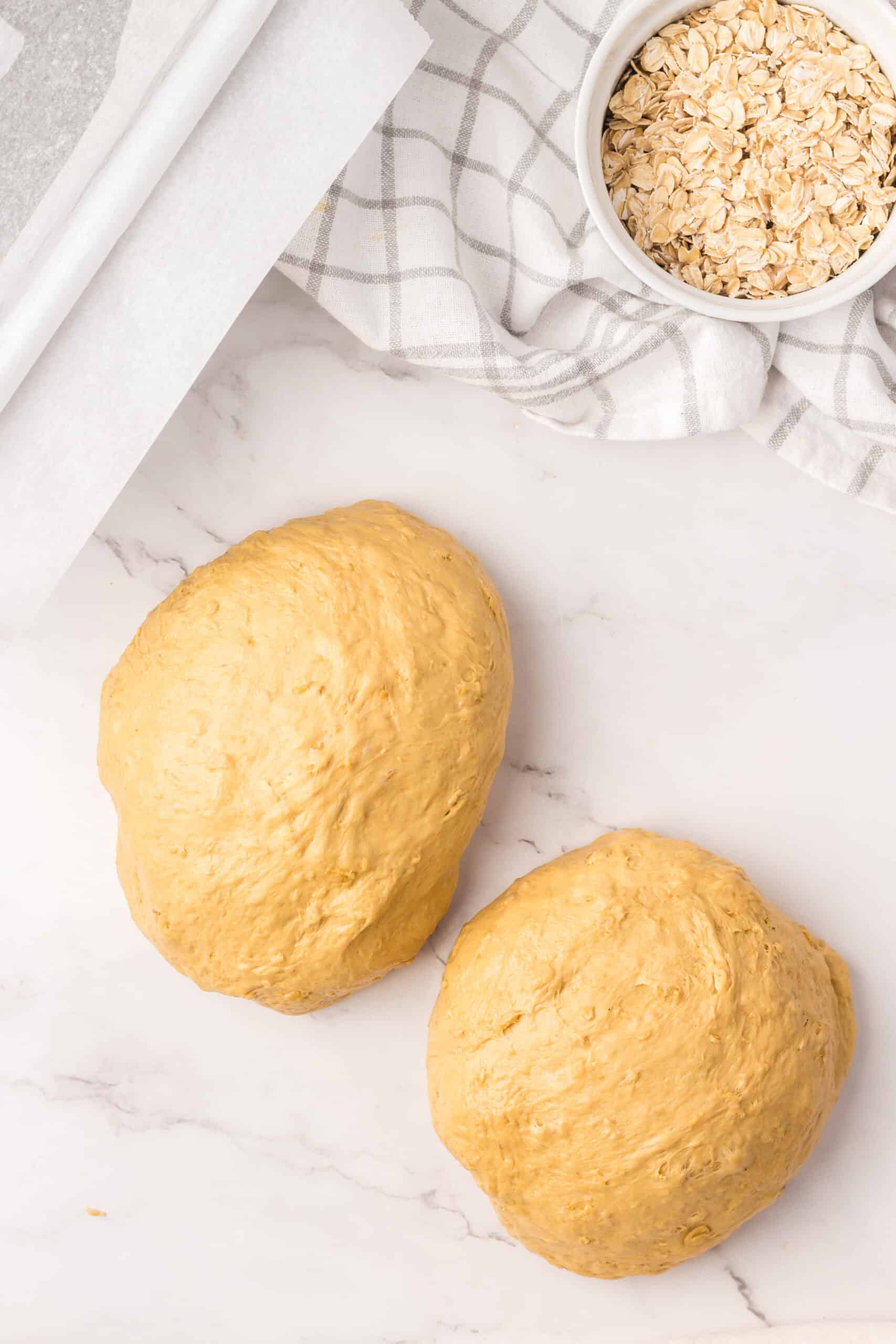
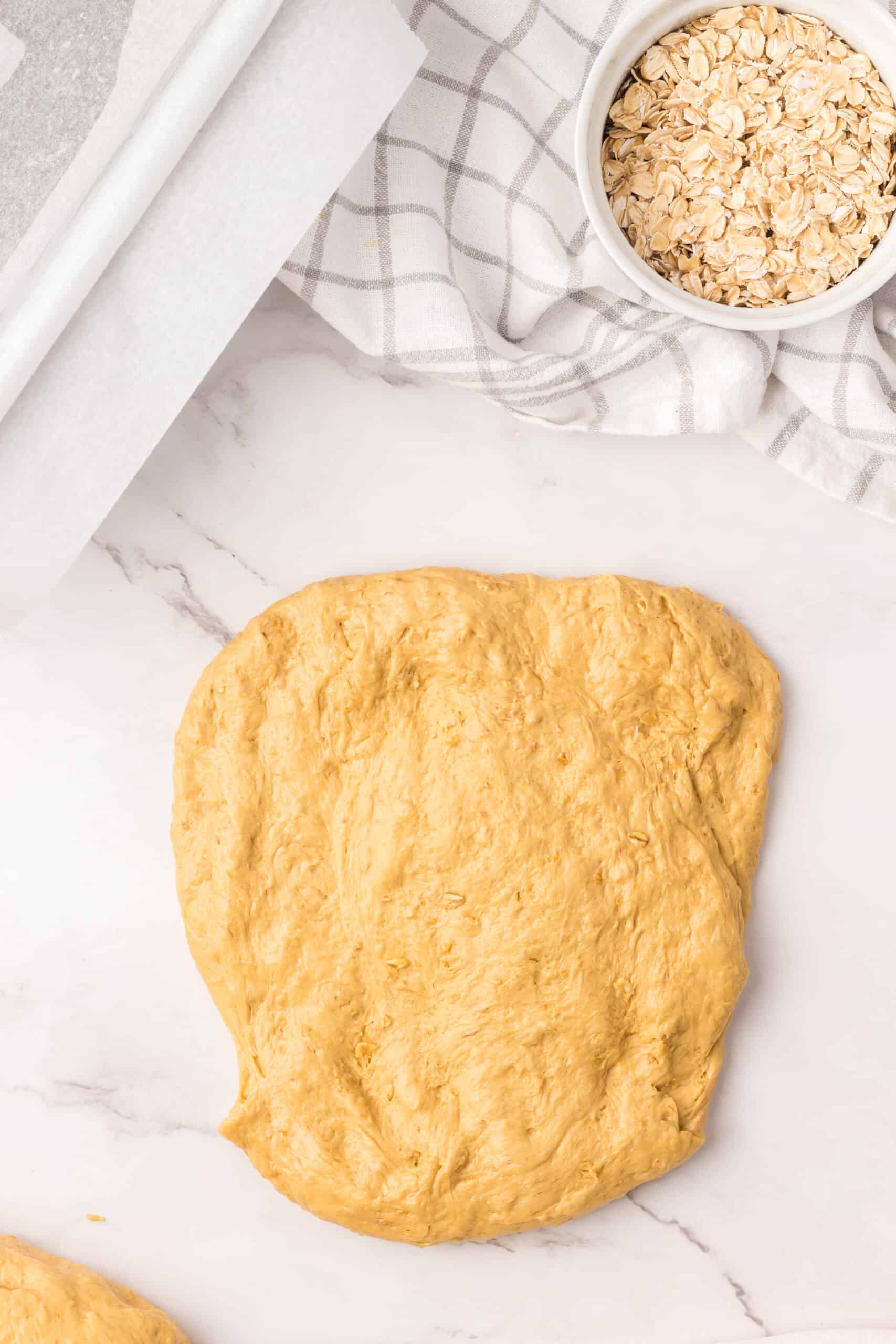
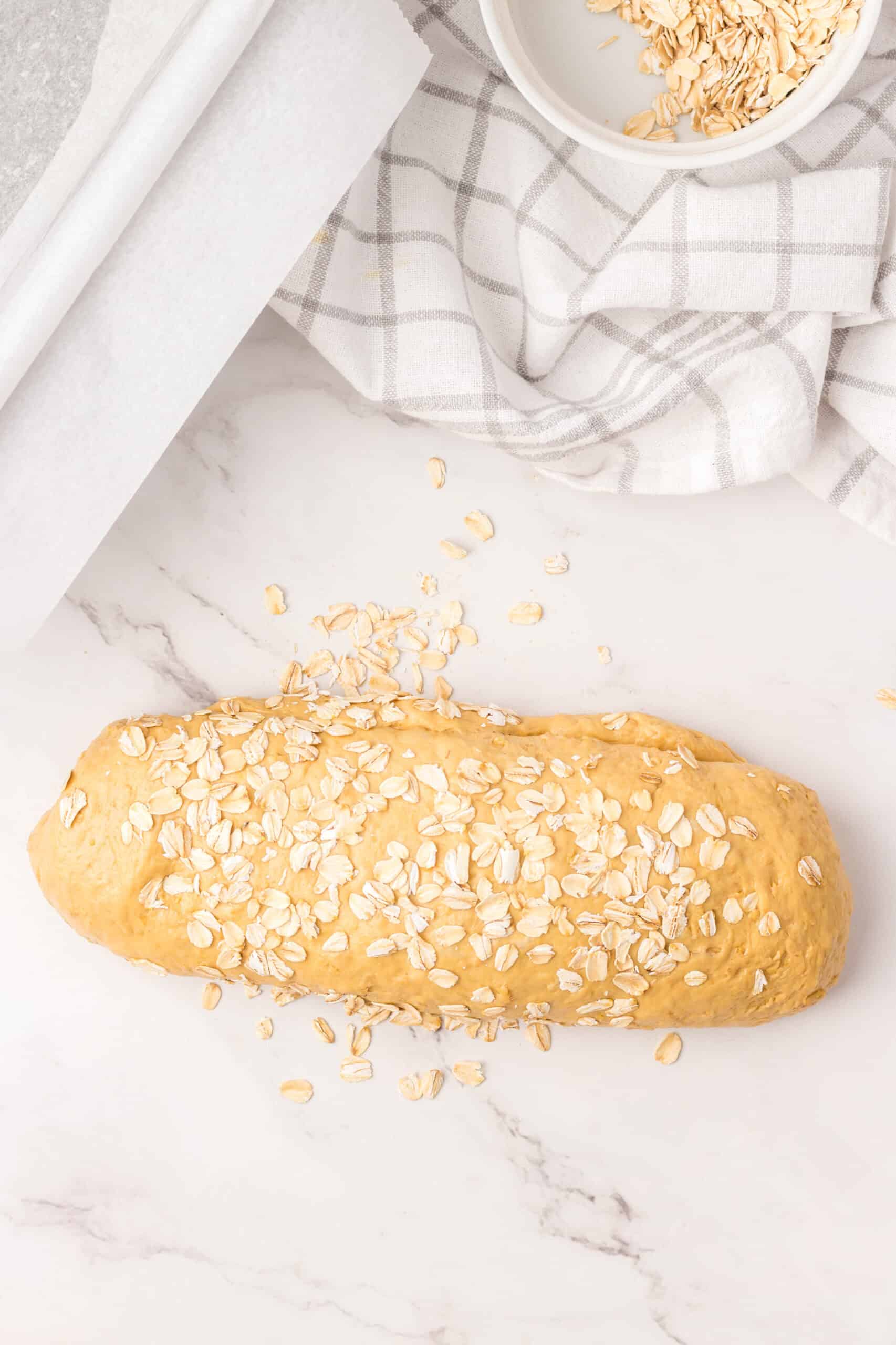
11 Divide the dough in 2.
12 Roll out one dough ball, on a lightly floured surface, into a rectangle.
13 Roll up the rectangle into a loaf shape. Roll the loaf in rolled oats. Repeat steps 12 and 13 for the second dough ball.
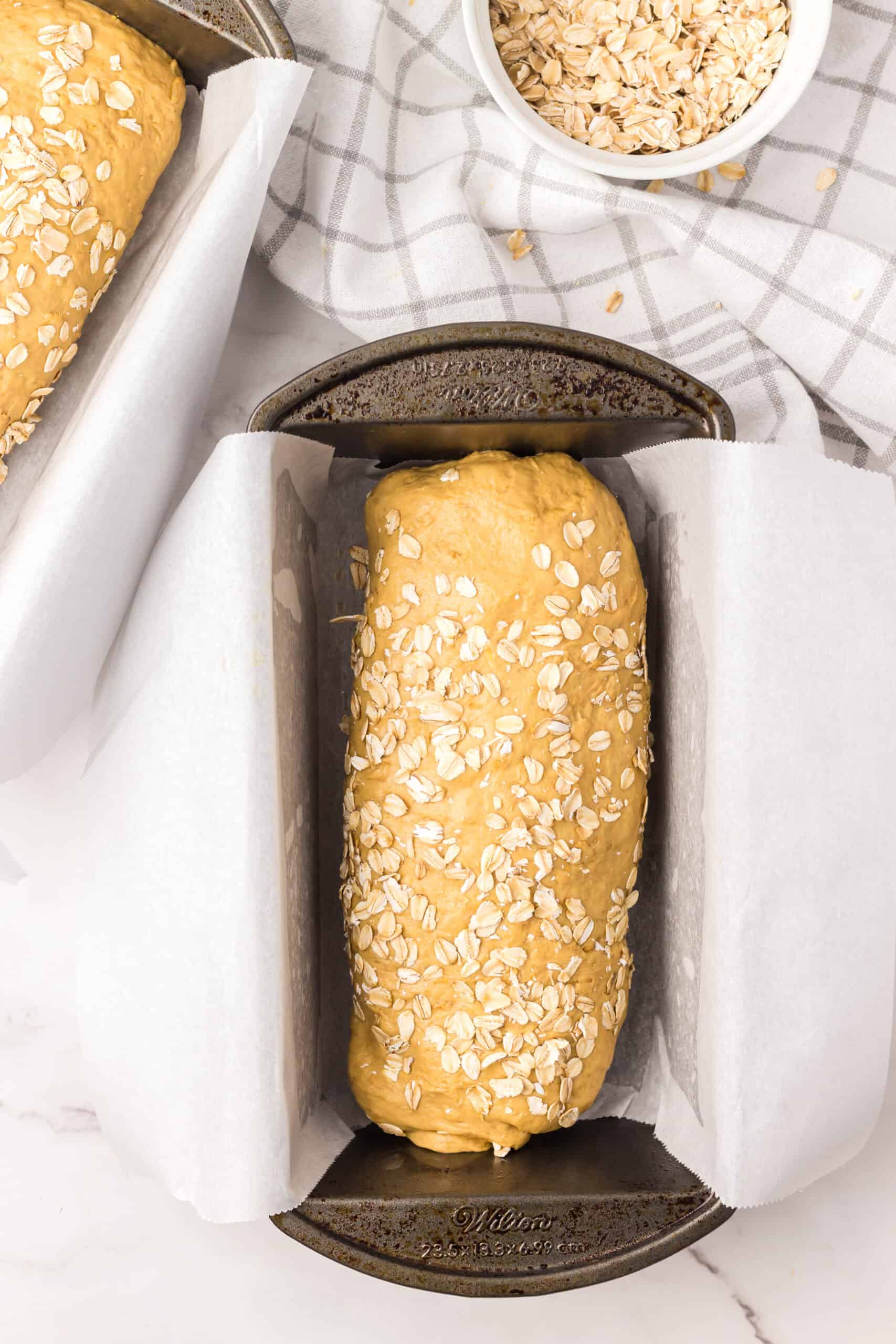
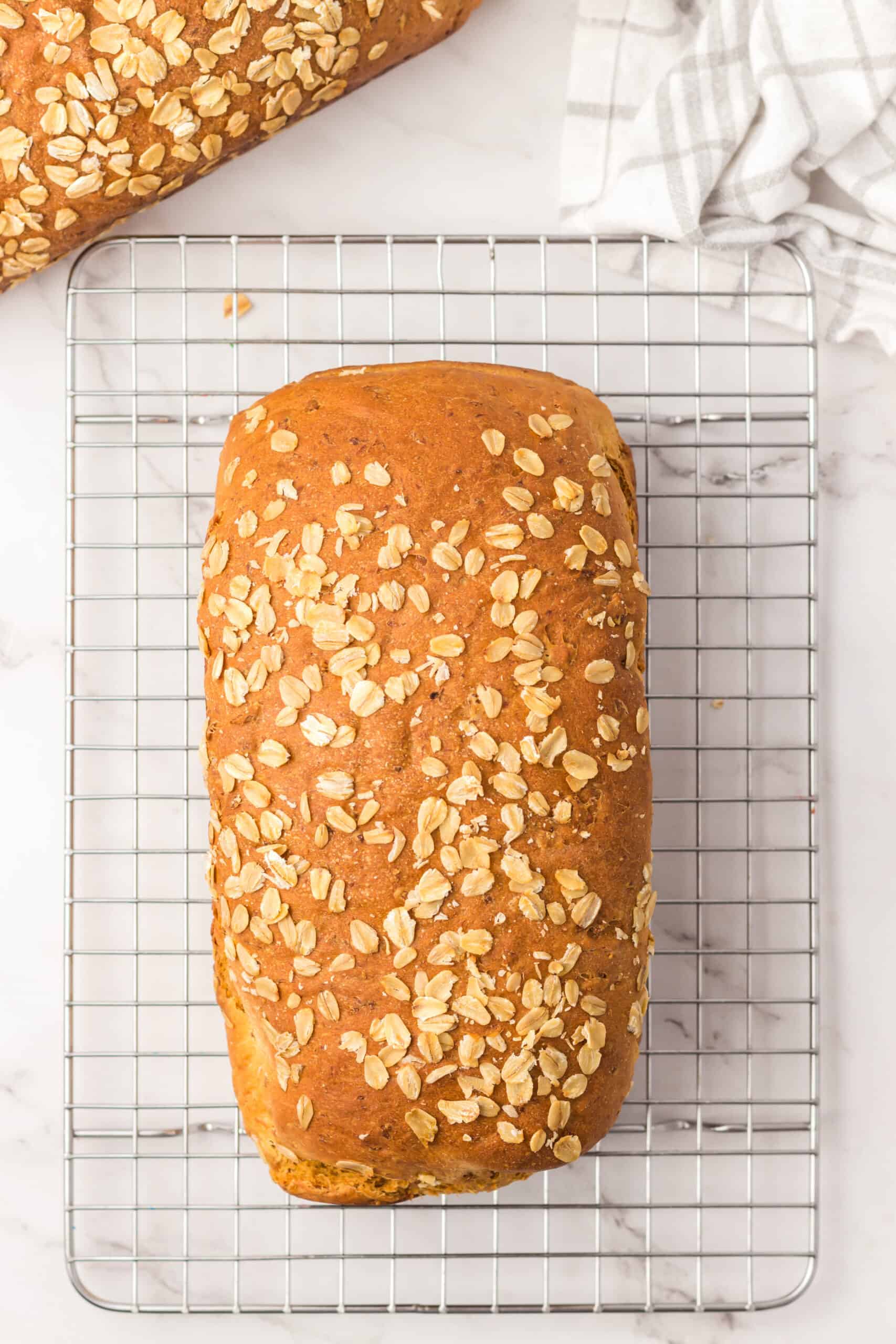
14 Transfer the loaves to prepared loaf pans. Allow to rise again for 30 minutes.
15 Bake the loaves in a preheated oven for 50 minutes, until the top and sides are golden brown. Transfer to a cooling rack to cool.
Storage and freezing
Counter: Store this vegan molasses oatmeal bread in an air-tight container on the counter for 3 to 4 days.
Fridge: It will last up to 5 days in an air-tight container in the fridge.
Freezer: You can also freeze this oatmeal bread! The bread can be stored whole or sliced. Either way, wrap it tightly in plastic wrap and then foil or place in a freezer bag. It should keep well for up to 3 months.
Defrost the wrapped loaf at room temperature on the counter.
Serving suggestions
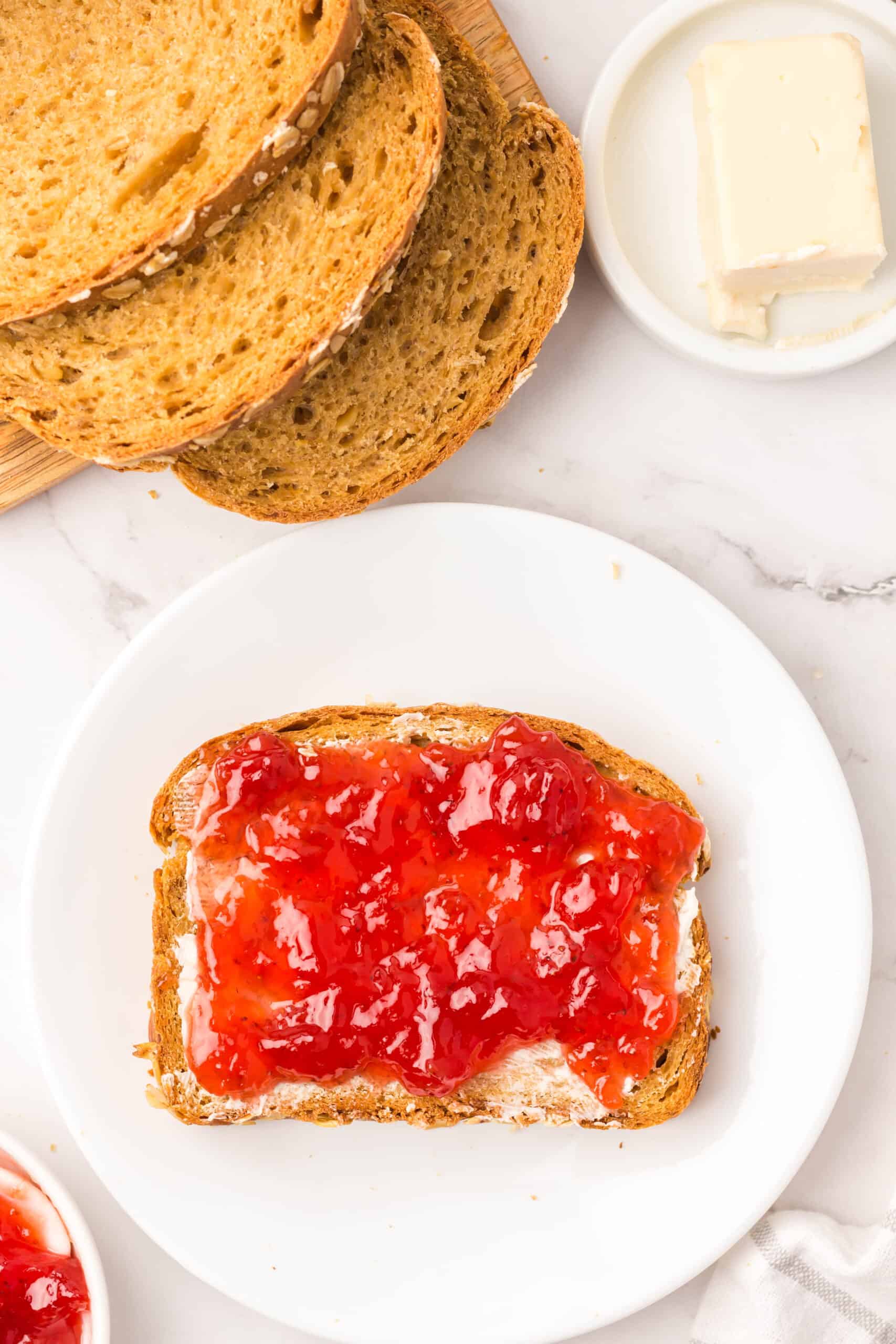
This easy homemade bread recipe can be used in the same way you would use any loaf of sandwich bread.
It makes great healthy breakfast toast or vegan avocado toast.
Make a hummus sandwich, vegan BLT sandwich, pesto tofu sandwich, vegan tuna salad sandwich, or vegan chickpea salad sandwich. Of course a good ol’ classic PB&J would be perfection on this vegan oatmeal bread!
Serve it alongside tofu veggie scramble in the morning, Butter Lettuce Salad for lunch, or a bowl of Creamy Vegan Tomato Soup for a cozy dinner.
Pro tips and tricks
~ Use warm water to activate the yeast. Not boiling water.
~ Use old-fashioned rolled oats, not quick or instant, and definitely not steel cut!
~ Allow the oatmeal mixture to cool just a bit (about 110°F…an instant read thermometer is great for this) before adding the activated yeast. If the temperature is too hot, it will kill the yeast and it’s ability to leaven the dough.
~ If you do not have a scale to weigh the flour, use the spoon and level method of measuring. Gently fluff up the flour with a spoon. Spoon it lightly into a measuring cup and level it off with the back of a knife. Do not press it down into the measuring cup and do not scoop directly with the measuring cup as you will end up with too much flour resulting in a dense, tough bread.
~ Stop adding flour to the dough once it is no longer sticking to your work surface. You may not need the full amount listed.
~ Allow the dough to double in size before separating into two dough balls.
~ Allow one more quick rise in the loaf pans before baking.
~ Bake until the top and sides are golden brown and the loaf sounds hollow when to tap on it with a wooden spoon.
~ Allow the oatmeal bread to cool for about 20 minutes before slicing.
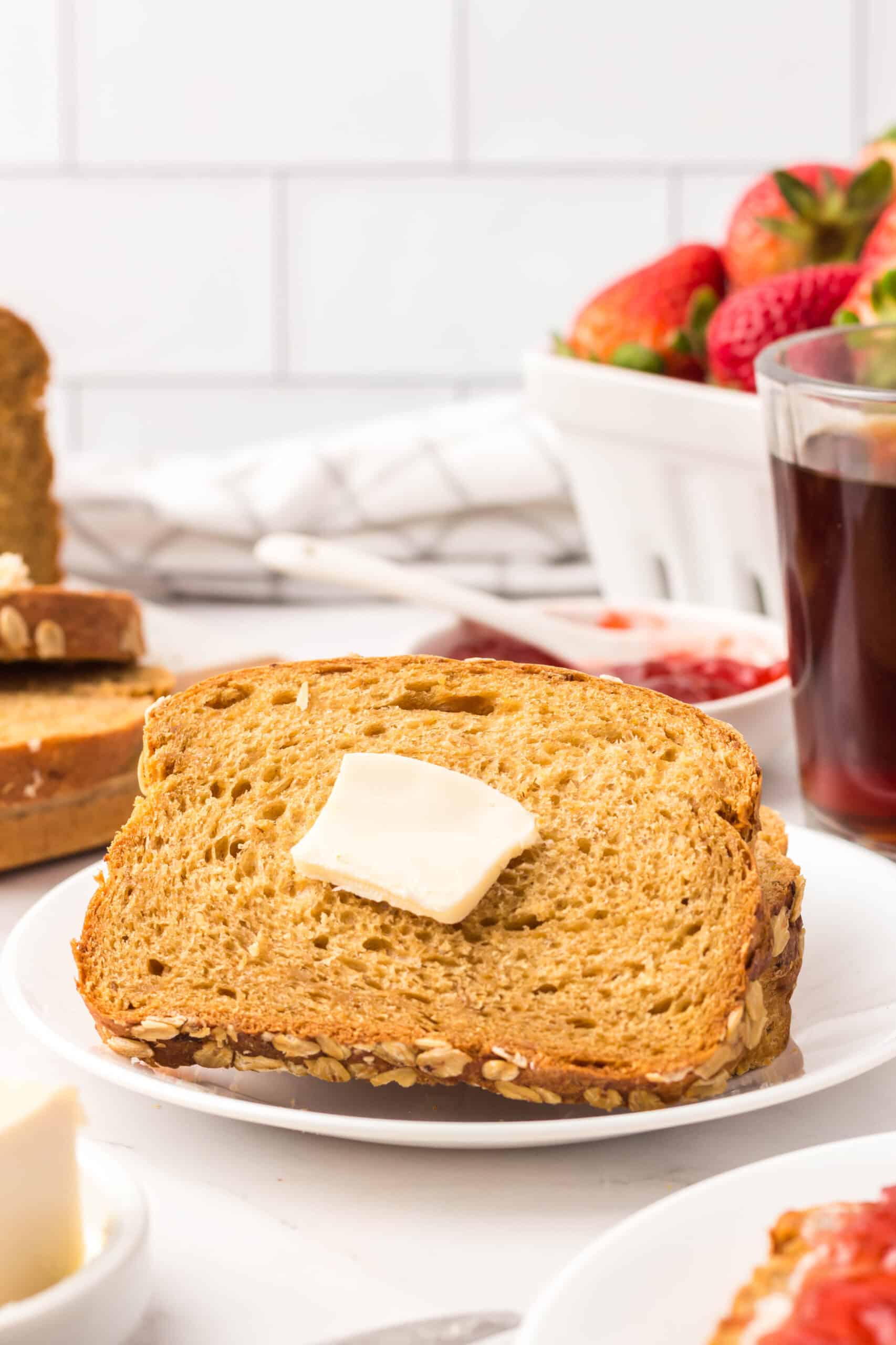
FAQs
Oatmeal bread is a yeast bread made from rolled oats, flour, sweetener, and a few other staple ingredients, like butter and salt. It’s soft and fluffy and pairs perfectly with savory or sweet toppings.
This molasses oatmeal bread is nutty, buttery, and slightly sweet.
You can use this vegan oatmeal bread like any sandwich bread. Toast it up and add toppings of nut butter and jam for a sweet breakfast. Or go the savory route and turn it into avocado toast. It’s great for making sandwiches or enjoying as a side with a salad or bowl of soup.
Yes! Make sure the to cool the bread completely before wrapping tightly in plastic wrap. You can then wrap it the loaf in foil or place it in a freezer bag. It will keep well up to 3 months.
More vegan bread recipes
- Vegan Garlic Bread
- Cranberry Banana Bread
- Vegan Pumpkin Bread
- Vegan Apple Cinnamon Bread
- Peanut Butter Banana Bread
- Vegan Bread Pudding
- Vegan Jalapeño Cornbread

I hope you love this recipe as much as we do! If you tried it, please use the rating system in the recipe card and leave a comment below with your feedback.
Be sure to sign up for my FREE Newsletter to be the first to get my NEW recipes! You can also follow me on Instagram, Facebook, and Pinterest.
For even more easy family recipes, be sure to check out my cookbook, The Meatless Monday Family Cookbook!

Vegan Molasses Oatmeal Bread
Recommended Equipment
- 2 Loaf Pan
Ingredients
- 2 packets dry active yeast
- ½ cup (118ml) water, 110°F
- 1 ¼ cups (296ml) boiling water
- 1 ¼ cups (106g) rolled oats divided
- ½ cup (118ml) molasses
- ½ cup (113g) vegan butter cut into small cubes
- 1 tablespoon (15g) salt
- 5-5 ½ cups (736g – 768g) all-purpose flour
Instructions
- In a small bowl combine the yeast and ½ cup warm water (not boiling!). Stir to combine and set aside for about 5 minutes. This will soften the yeast and bubbles will start to form.
- Bring 1 ¼ cups of water to a boil. Once boiling, remove it from the heat and add it to a large bowl. Add 1 cup of rolled oats and molasses to the water. Stir to fully combine.
- Cut the butter into cubes and add them to the water/oat mixture. Stir until the butter almost fully melts. Allow the oat mixture to cool down until it reaches about 110°F, about 5 to 10 minutes.
- Once the mixture has cooled, add the softened yeast. Stir to fully combine, then add the salt.
- Using a wooden spoon, add about ½ cup of flour at a time to the oat mixture. Stir until the flour has been fully incorporated. Repeat this process until you can't easily add more flour in. This should take about 4 cups of the flour.
- Transfer the dough to a lightly floured surface and knead in more flour, continuing to add in a small amount at a time. The dough may take the full 5 ½ cups of flour depending on the humidity and how the flour was measured.
- Once the dough isn't sticking to the counter, the dough is ready to rise. Grease a large bowl, add the dough to the bowl, and cover it with a tea towel or plastic wrap. Set aside and allow to rise for about 1 ½ to 2 hours or until the dough has doubled in size.
- Meanwhile, grease and line 2 bread loaf pans with parchment paper.
- Once the dough has doubled in size, turn the dough out onto a lightly floured surface and dived the dough into 2.
- Flatten 1 of the dough balls in to a 8"x16" rectangle then roll it up into a loaf shape, tucking the edges in. Roll the loaf in 2 tablespoons of rolled oats that have been sprinkled on the work surface. Place the loaf in one of the prepared loaf pans.
- Repeat step 10 for the second dough ball.
- Allow the loaves to rise in the pans for 30 minutes before placing them in the oven.
- About 10 minutes before the dough has finished rising in the loaf pans, preheat the oven to 375°F.
- Bake at 375°F for 50 minutes or until the top and sides are golden brown. You can also check the doneness by gently tapping on the top of the loaf with the handle of a wooden spoon. If it sounds hollow, the bread is done.
- Place the loaves on a cooling rack in the loaf pans for 10 minutes. After 10 minutes remove the bread for the loaf pans and allow to cool for another 10 minutes before slicing and serving.
Notes
This recipe makes 2 loaves with approximately 16 slices per loaf. Nutrition facts calculated based on 2 slices per serving.
Nutrition
Nutrition values are calculated using online calculators and are estimates only. Please verify using your own data.





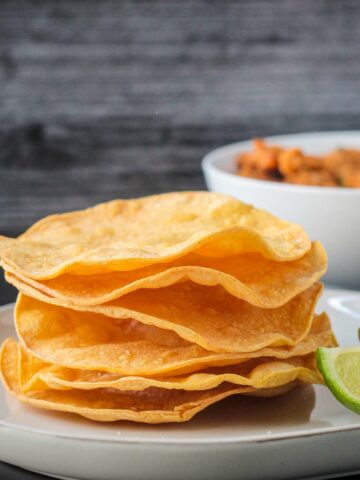

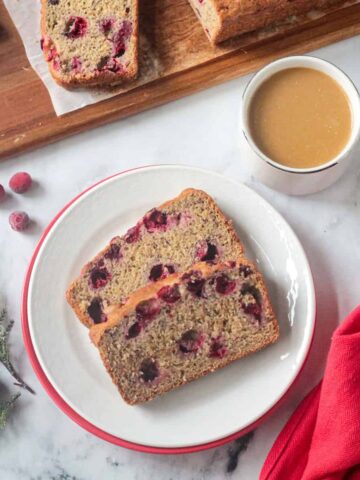

Comments
No Comments